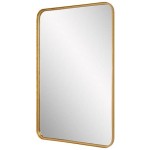How to Screen Mirror Your Phone to Your TV
Screen mirroring, also known as screen casting, allows you to wirelessly display your phone's screen onto a larger display, such as a TV. This can be incredibly useful for sharing photos and videos with friends and family, enjoying entertainment on a bigger screen, or even using your phone as a presentation remote. This article will guide you through the process of screen mirroring your phone to your TV, catering to both Android and iOS users.
Understanding the Technology
Screen mirroring typically utilizes Wi-Fi Direct technology, enabling a direct connection between your phone and TV without the need for an internet connection. Essentially, your phone's display is being replicated onto your TV in real-time. This allows for a smooth and responsive experience, though the specific features and performance may vary depending on the devices and the available technology.
Before you begin, ensure that both your phone and TV support screen mirroring. Most modern smart TVs and streaming devices are compatible, but it's always best to check the device's documentation or manufacturer website for confirmation. If your TV lacks built-in screen mirroring capabilities, you may need to consider purchasing a separate screen mirroring device, such as a Chromecast or Amazon Fire TV Stick.
Screen Mirroring on Android
Android devices offer a straightforward approach to screen mirroring. Here's how to get started:
- Enable Wi-Fi Direct on your TV: Consult your TV manual or settings for instructions on enabling Wi-Fi Direct mode. Usually, this can be accessed through the network or connectivity settings.
- Connect your phone to the same Wi-Fi network: Although screen mirroring does not strictly require an internet connection, it's generally recommended to connect both your phone and TV to the same Wi-Fi network for a more stable connection.
- Open the Quick Settings menu on your Android phone: Swipe down from the top of the screen to reveal the Quick Settings menu. Look for an icon representing screen mirroring, which may be labeled "Cast," "Smart View," or "Wireless Display." Alternative options include accessing the "Settings" app and navigating to "Connected devices" or "Display."
- Select your TV from the list of available devices: A list of available devices that support screen mirroring will appear. Select your TV from the list, and your phone's screen should begin mirroring to your TV.
If you encounter issues with your Android phone's screen mirroring, ensure that Bluetooth is enabled on both your phone and TV and that both devices are within the same Wi-Fi range. Additionally, check for any software updates for your phone and TV as outdated software can sometimes cause compatibility issues.
Screen Mirroring on iOS
Screen mirroring on iOS devices, using Apple's AirPlay technology, follows a similar process. Here's how to connect your iPhone or iPad to your TV:
- Ensure your TV supports AirPlay: Many modern smart TVs and streaming devices are compatible with AirPlay. Check your TV's specifications or manual for confirmation.
- Connect your iPhone or iPad to the same Wi-Fi network as your TV: Similar to the Android process, connecting to the same Wi-Fi network ensures a more reliable connection.
- Open the Control Center on your iPhone or iPad: Swipe down from the top right corner of the screen to reveal the Control Center. Look for the "Screen Mirroring" icon, which resembles a rectangle with a triangle inside. You may need to tap on the "More" icon to reveal additional options.
- Select your TV from the list of available devices: A list of AirPlay-compatible devices within range will appear. Select your TV from the list, and your phone's screen will begin mirroring to your TV.
If you are using a third-party streaming device, such as Apple TV, the process is slightly different. Open the "Control Center" on your iPhone or iPad, tap on the "Screen Mirroring" icon, and select your Apple TV from the list of available devices.
Troubleshooting Screen Mirroring Issues
While screen mirroring is generally straightforward, some users may encounter issues. Here are some common troubleshooting steps:
- Check your Wi-Fi connection: A weak Wi-Fi signal can disrupt screen mirroring. Ensure both your phone and TV are connected to a stable Wi-Fi network. Consider moving closer to your router or restarting your router if necessary.
- Restart your phone and TV: A simple restart can sometimes resolve connection issues. Turn off both your phone and TV, wait a few moments, and turn them back on.
- Update your device's software: Outdated software can sometimes lead to compatibility problems. Check for updates for both your phone and TV.
- Check for device compatibility: Not all devices are compatible with screen mirroring. Refer to your phone and TV manuals or manufacturer websites for compatibility information.
Screen mirroring can be a valuable tool for expanding your phone's display to a larger screen. While the process is generally straightforward, be sure to check device compatibility, enable Wi-Fi Direct or AirPlay, and troubleshoot any connection issues to ensure a smooth and enjoyable experience.

Top 3 Ways To Screen Mirror Android Sony Tv
Screen Mirroring Cast To Tv Apps On Google Play

How To Mirror From Your Samsung Smartphone Tv New Zealand

A Guide To Screen Mirroring From Android Samsung Lg Sony And Roku Tvs Dignited

Screen Mirror To Samsung Tv Android Mac Ios Free App

How To Screen Mirror Your Android Or Windows Phone Roku Streaming Device

Mirror Phone To Tv How Connect Android Or Ios Mobile Wirelessly Cast S And Photos

How Does Screen Mirroring Work Iphone Ipad Mac Android
How To Activate Screen Mirroring On A Tv Quora
Screen Mirroring Sharing Apps On Google Play








